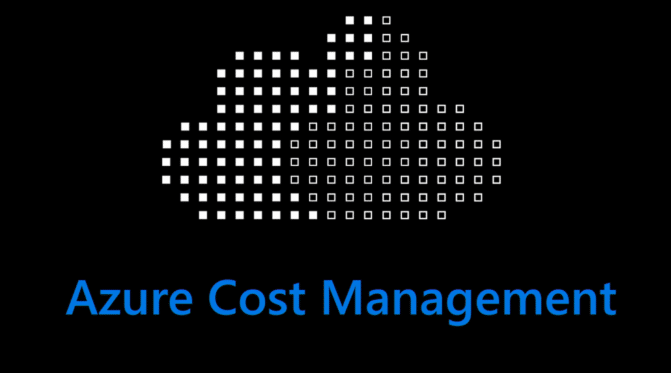
Industry:
Utilities: Electrical Provider
Company Size:
5,000–10,000 employees




Understanding Oracle’s Java Licensing Policies
If you are a business or organization using Oracle Java in your operations, it’s crucial to be aware of Oracle’s policies on Java licensing. Recently, there has been a significant uptick in Oracle sales teams approaching companies and asking for use data around Oracle Java. These requests are often an Oracle Java license audit in disguise or quickly turn into an audit when the results aren’t favorable to the sales rep.
An Oracle Java license audit is a review of your organization’s use of Oracle Java to ensure that you comply with the terms and conditions of your Java license. This may include examining your organization’s Java usage, including the number of users, the types of applications being run, and the number of Java-based servers being used.
There are several reasons why Oracle might choose to conduct a Java license audit. These could include:
If Oracle decides to conduct a Java license audit of your organization, you will receive a letter or email from Oracle requesting information about your Java usage. This may include a request for documentation such as inventory lists, user counts, and application lists. Alternatively, an Oracle salesperson may contact you to request the same type of audit information. Be aware that this is essentially an Oracle Java license audit in disguise.
Oracle may also request deployment data to review your Java infrastructure and usage. It’s important to note that even if they say it’s a simple process, the audit process can take several months to complete.
To prepare for an Oracle Java license audit, it’s crucial to clearly understand your organization’s Java usage and the terms and conditions of your Oracle Java license. Here are a few steps you can take:
What Happens if You Are Found Non-Compliant During an Oracle Java License Audit?
Suppose Oracle finds that your organization needs to comply with the terms and conditions of your Java license during an audit. In that case, you may be required to purchase additional licenses or pay for any unauthorized usage. In some cases, Oracle may choose to terminate your Java license entirely.
To avoid these potential consequences, it’s crucial to stay up to date on your Oracle Java license’s terms and ensure that your organization complies. This may involve purchasing additional licenses as needed or making changes to your Java usage to align with the terms and conditions of your license.
Oracle Java license audits are common for businesses and organizations using Oracle Java. By understanding the audit process and taking steps to ensure compliance with your license, you can minimize the risk of any issues arising during an audit.

As more organizations move towards virtualized environments, it’s important to understand how Oracle’s virtualization policy applies to different technologies and licensing models. Failure to comply with these guidelines can result in license non-compliance and potential financial penalties. This blog will guide you through the specifics of Oracle’s virtualization policy, including hardware and software virtualization, popular virtualization technologies, and licensing requirements.
Oracle’s virtualization policy specifies different guidelines for hardware and software virtualization technologies. Hardware virtualization involves running multiple operating systems on a single physical machine, while software virtualization allows multiple applications to run on a single operating system. Understanding these differences is crucial to ensuring compliance with Oracle’s virtualization policy.
Popular virtualization technologies such as VMware, Hyper-V, and VirtualBox play a crucial role in virtualization environments, but it’s important to note that Oracle’s virtualization policy treats each technology differently. For example, Oracle has specific guidelines for using its products in a VMware environment. These guidelines require that customers have a valid license for each Oracle product used in the VMware environment and that the VMware environment is configured according to specific requirements outlined in the Oracle VMWare Support Policies.
Similarly, if you’re using Hyper-V to run Oracle products, you must ensure that you have a valid license for each product used in the Hyper-V environment. You must also follow specific guidelines for configuring the virtual environment and the hardware it runs on, as outlined in Oracle’s Hyper-V Support Policies.
In the case of VirtualBox, Oracle’s virtualization policy specifies that it can only be used for personal, non-commercial use and that any use for commercial purposes requires a commercial license.
Regarding virtualized environments, Oracle’s licensing policy can be complex and confusing. Oracle has specific requirements and rules for licensing its products in virtualized environments, and failure to comply with these policies can result in financial and legal consequences. Here are some key things to keep in mind when it comes to Oracle licensing and virtualization:
Oracle’s licensing policy considers each virtual machine (VM) a separate physical server, regardless of the underlying hardware. This means that organizations must ensure they have the appropriate licenses for each VM running Oracle software.
Oracle has different product licensing models, such as per-user or per-core licensing. Organizations need to understand the licensing model for each product and ensure they have the appropriate licenses to cover their usage.
Virtualization technologies such as VMware, Hyper-V, and VirtualBox are subject to different licensing requirements from Oracle. Organizations must understand the terms and conditions outlined in Oracle’s virtualization guidelines for each product used in these environments.
Organizations must implement best practices and use the right tools to ensure compliance with Oracle’s virtualization policy. Here are some tips to help you stay compliant:
The consequences of non-compliance with Oracle’s virtualization policy can be severe and have significant financial and legal implications for an organization. Non-compliance can result in audits, fines, and penalties, leading to legal disputes and reputational damage.
Oracle has a reputation for aggressive auditing practices and has a team dedicated to investigating and enforcing its licensing policies. Audits can result in significant financial penalties, including backdated licensing fees, interest charges, and the cost of the audit itself. In extreme cases, non-compliance can lead to legal action, resulting in hefty fines and legal fees.
In addition to financial and legal risks, non-compliance can damage an organization’s reputation. News of non-compliance and legal disputes can spread quickly, and potential customers may be deterred from doing business with a company with a history of non-compliance.
To mitigate these risks, it is crucial for organizations to stay up-to-date with Oracle’s virtualization policy and to take steps to ensure compliance in all virtualized environments. This includes regular audits, monitoring tools, and IT staff and end-users training. By prioritizing compliance and proactively managing virtualized environments, organizations can avoid the consequences of non-compliance and protect their reputation and bottom line.
Staying ahead of Oracle’s virtualization policy is essential for organizations that use Oracle products in virtualized environments. By understanding Oracle’s licensing requirements and guidelines, implementing best practices, and using the right tools, organizations can ensure compliance and mitigate non-compliance risks. It’s also important to stay current with any changes to Oracle’s virtualization policies and guidelines to ensure ongoing compliance.

As a customer, when you are looking to buy software, you want to get the best possible deal and build a strong relationship with the software provider. However, this can be difficult to achieve if a bad sales rep is working with you. In this blog post, we will explore why keeping a bad sales rep could cost you and provide actionable tips on how to get a great software deal and strengthen relationships.
A bad sales rep can cost you in many ways. A bad sales rep:
Now that we’ve looked at why a bad sales rep can cost you, let’s explore some actionable tips on how to get a great software deal and strengthen relationships.
Mistake: Not doing research
Tip: Before making a software purchase, do your research. Look for reviews and testimonials from other customers, check the software provider’s website and social media accounts, and speak with current or past customers if possible. This will help you make an informed decision and avoid wasting time and money.
Mistake: Not communicating your needs
Tip: When speaking with a sales rep, be clear and specific about your needs. This will help the sales rep understand your needs and make appropriate recommendations. Don’t be afraid to ask questions or ask for clarification if you don’t understand something.
Statistic: According to a survey by TechValidate, 97% of B2B buyers said that the sales rep’s ability to understand their needs was an important factor in their decision to purchase.
Mistake: Not negotiating
Tip: Don’t be afraid to negotiate with the sales rep. Ask for discounts or special pricing, especially if purchasing multiple licenses or a long-term contract. If the sales rep is unwilling to negotiate, consider speaking with management or looking for a different software provider.
Statistic: According to a survey by HubSpot, 89% of B2B buyers said negotiating pricing was an important factor in their decision to purchase.
As a customer, if you’re looking to buy software, you want to get the best possible deal and build a strong relationship with the software provider. We’ll help you avoid those bad sales reps that cost you, and we’ll provide even more actionable tips on how to get a great software deal and strengthen relationships.
As businesses continue to rely more and more on software, the role of the sales representative has become increasingly important. A good sales rep can help enterprises to find the right software at the right price, while a bad sales rep can do the opposite. In fact, a bad sales rep could end up costing your business more than just money. According to a study by HubSpot, over 50% of customers say they have stopped doing business with a company because of poor customer service. So, how do you avoid keeping a bad sales rep, get an excellent software deal, and strengthen your business relationships?
The first step in avoiding a bad sales rep is to know what to look for. Here are some warning signs that you might have a bad sales rep:
Actionable Recommendation: Watch for these warning signs, and don’t hesitate to ask questions or voice concerns to their management team. A good sales rep will be transparent and responsive.
Error to Avoid: Don’t assume that a sales rep who seems nice or friendly will automatically be a good fit. Always do your research and ask questions.
Your business has unique needs and goals when it comes to software. A good sales rep should prioritize your vision, not theirs. Here are some ways to ensure that your goals are being met:
Actionable Recommendation: Clearly articulate your goals and vision to potential sales reps. Look for reps who show a willingness to work with you to achieve these goals.
Error to Avoid: Don’t settle for a sales rep who tries to push their own agenda or goals onto your business. Always prioritize your own needs and vision.
Sales reps are often incentivized to push additional products or services, even if they don’t add value to your specific needs. Before agreeing to any add-ons, take the time to evaluate whether they align with your goals and objectives. Ask your rep to provide data or case studies demonstrating how the add-on has helped other clients in similar industries. Don’t be afraid to push back if you feel the add-on isn’t necessary or won’t provide a good return on investment.
Remember, it’s your business and your budget— don’t let a bad sales rep pressure you into making a decision that isn’t right for you.

As a customer, when you are looking to buy software, you want to get the best possible deal and build a strong relationship with the software provider. However, this can be difficult to achieve if a bad sales rep is working with you. In this blog post, we will explore why keeping a bad sales rep could cost you and provide actionable tips on how to get a great software deal and strengthen relationships.

A bad sales rep can cost you in many ways. A bad sales rep:
Actionable Tips to Get a Great Deal and Strengthen Relationships
Now that we’ve looked at why a bad sales rep can cost you, let’s explore some actionable tips on how to get a great software deal and strengthen relationships.
Mistake: Not doing research
Tip: Before making a software purchase, do your research. Look for reviews and testimonials from other customers, check the software provider’s website and social media accounts, and speak with current or past customers if possible. This will help you make an informed decision and avoid wasting time and money.
Mistake: Not communicating your needs
Tip: When speaking with a sales rep, be clear and specific about your needs. This will help the sales rep understand your needs and make appropriate recommendations. Don’t be afraid to ask questions or ask for clarification if you don’t understand something.
Statistic: According to a survey by TechValidate, 97% of B2B buyers said that the sales rep’s ability to understand their needs was an important factor in their decision to purchase.
Mistake: Not negotiating
Tip: Don’t be afraid to negotiate with the sales rep. Ask for discounts or special pricing, especially if purchasing multiple licenses or a long-term contract. If the sales rep is unwilling to negotiate, consider speaking with management or looking for a different software provider.
Statistic: According to a survey by HubSpot, 89% of B2B buyers said negotiating pricing was an important factor in their decision to purchase.
Get in Touch with Us to Avoid That Bad Software and Sales Rep
As a customer, if you’re looking to buy software, you want to get the best possible deal and build a strong relationship with the software provider. We’ll help you avoid those bad sales reps that cost you, and we’ll provide even more actionable tips on how to get a great software deal and strengthen relationships.

As businesses continue to rely more and more on software, the role of the sales representative has become increasingly important. A good sales rep can help enterprises to find the right software at the right price, while a bad sales rep can do the opposite. In fact, a bad sales rep could end up costing your business more than just money. According to a study by HubSpot, over 50% of customers say they have stopped doing business with a company because of poor customer service. So, how do you avoid keeping a bad sales rep, get an excellent software deal, and strengthen your business relationships?
The first step in avoiding a bad sales rep is to know what to look for. Here are some warning signs that you might have a bad sales rep:
Actionable Recommendation: Watch for these warning signs, and don’t hesitate to ask questions or voice concerns to their management team. A good sales rep will be transparent and responsive.
Error to Avoid: Don’t assume that a sales rep who seems nice or friendly will automatically be a good fit. Always do your research and ask questions.
Your business has unique needs and goals when it comes to software. A good sales rep should prioritize your vision, not theirs. Here are some ways to ensure that your goals are being met:
Actionable Recommendation: Clearly articulate your goals and vision to potential sales reps. Look for reps who show a willingness to work with you to achieve these goals.
Error to Avoid: Don’t settle for a sales rep who tries to push their own agenda or goals onto your business. Always prioritize your own needs and vision.
Sales reps are often incentivized to push additional products or services, even if they don’t add value to your specific needs. Before agreeing to any add-ons, take the time to evaluate whether they align with your goals and objectives. Ask your rep to provide data or case studies demonstrating how the add-on has helped other clients in similar industries. Don’t be afraid to push back if you feel the add-on isn’t necessary or won’t provide a good return on investment.
Remember, it’s your business and your budget— don’t let a bad sales rep pressure you into making a decision that isn’t right for you.


Azure zombie resources are cloud resources that are no longer in use but remain active and consuming resources, resulting in unnecessary charges. Zombie resources can occur when cloud resources are not adequately decommissioned or deleted or when resources are left running but are no longer needed.
These resources can be a significant problem for organizations using Azure, as they can result in unexpected and potentially significant Azure bills. To avoid this issue, it is vital to regularly review and clean up your use of Azure to ensure that all resources are appropriately decommissioned or deleted when they are no longer needed. Several factors can contribute to the development of Azure zombie resources.
For example, zombie resources can occur when:
There are many tools and strategies that organizations can use to identify and remove Azure zombie resources, including:
Azure is a powerful and feature-rich cloud platform that offers a wide range of services and tools to help organizations build, deploy, and manage applications and

Workloads. However, the cost of using Azure can be a significant concern for organizations, particularly as the scale and complexity of their Azure environment grow.
Optimizing Azure costs requires a strategic approach considering the organization’s needs and requirements. To help organizations optimize their Azure costs, we recommend the following strategies:
Understand your workloads: One of the critical steps in optimizing Azure costs is to understand the specific workloads and resources consumed in your environment. This includes identifying which services and resources are used, how they are used, and how much they cost.
Right-size your resources: Ensuring your resources are appropriately sized for your workloads is critical to optimizing Azure costs. This can involve scaling resources up or down as needed to meet the demands of your workload or selecting cost-effective resource sizes that meet your performance requirements.
Utilize Azure Cost Management tools: Azure provides various tools and services to help organizations optimize costs, including Azure Cost Management, Azure Advisor, and the Azure Pricing Calculator. These tools can help you identify optimization opportunities, track your costs over time, and plan for future growth.
Use resource tagging: Resource tagging is a powerful tool for optimizing Azure costs. It allows you to assign metadata to your resources and track their usage and costs more granularly. This can help you identify and optimize underutilized or overutilized resources and allocate costs more effectively.
Optimize resource deployment: The way that you deploy resources in Azure can have a significant impact on your costs. To optimize your costs, consider using resource groups to manage and deploy resources more efficiently and leverage deployment automation tools like Azure Resource Manager templates to streamline resource deployment.
By following these strategies, organizations can optimize their Azure costs and get the most value from their investment in the cloud.
Effective Azure cost management requires a strategic approach considering the organization’s needs and requirements. To help optimize Azure costs, we recommend the following best practices:
Azure provides a range of tools and services to help organizations optimize their costs, including:
Effective Azure cost management requires a strategic approach considering the organization’s needs and requirements. To help organizations optimize their Azure costs, we recommend the following strategies:
In addition to the strategies and best practices mentioned above, there are several additional tips that organizations can follow to optimize their Azure costs:
Azure provides a range of documentation and resources to help organizations optimize their Azure costs, including:
The cost of using Azure varies depending on the specific services and resources consumed. Azure offers a range of pricing plans and options to suit the needs of different organizations, including:
In addition to the documentation and tools mentioned above, there is a range of additional resources available to help organizations optimize their Azure costs, including:
By leveraging these resources and strategies, organizations can optimize their Azure costs and get the most value from their investment in the cloud.

Azure Cost Management

Azure is a powerful and feature-rich cloud platform that offers a wide range of services and tools to help organizations build, deploy, and manage applications and workloads. However, the cost of using Azure can be a significant concern for organizations, particularly as the scale and complexity of their Azure environment grow.
Optimizing Azure costs requires a strategic approach considering the organization’s specific needs and requirements. To help organizations optimize their Azure costs, we recommend the following strategies:
Understand your workloads: One of the critical steps in optimizing Azure costs is to understand the specific workloads and resources consumed in your environment. This includes identifying which services and resources are used, how they are used, and how much they cost.
Right-size your resources: Ensuring your resources are appropriately sized for your workloads is critical to optimizing Azure costs. This can involve scaling resources up or down as needed to meet the demands of your workload or selecting cost-effective resource sizes that meet your performance requirements.
Utilize Azure Cost Management tools: Azure provides various tools and services to help organizations optimize costs, including Azure Cost Management, Azure Advisor, and the Azure Pricing Calculator. These tools can help you identify optimization opportunities, track your costs over time, and plan for future growth.
Use resource tagging: Resource tagging is a powerful tool for optimizing Azure costs. It allows you to assign metadata to your resources and track their usage and costs more granularly. This can help you identify and optimize underutilized or overutilized resources and allocate costs more effectively.
Optimize resource deployment: The way that you deploy resources in Azure can have a significant impact on your costs. To optimize your costs, consider using resource groups to manage and deploy resources more efficiently and leverage deployment automation tools like Azure Resource Manager templates to streamline resource deployment.
By following these strategies, organizations can optimize their Azure costs and get the most value from their investment in the cloud.
Effective Azure cost management requires a strategic approach considering the organization’s specific needs and requirements. To help optimize Azure costs, we recommend the following best practices:
Azure provides a range of tools and services to help organizations optimize their costs, including:
Effective Azure cost management requires a strategic approach considering the organization’s specific needs and requirements. To help organizations optimize their Azure costs, we recommend the following strategies:
In addition to the strategies and best practices mentioned above, there are several additional tips that organizations can follow to optimize their Azure costs:
Azure provides a range of documentation and resources to help organizations optimize their Azure costs, including:
The cost of using Azure varies depending on the specific services and resources consumed. Azure offers a range of pricing plans and options to suit the needs of different organizations, including:
In addition to the documentation and tools mentioned above, there is a range of additional resources available to help organizations optimize their Azure costs, including:
By leveraging these resources and strategies, organizations can optimize their Azure costs and get the most value from their investment in the cloud.

What Are Azure Zombie Resources?
Azure zombie resources are cloud resources that are no longer in use but remain active and consuming resources, resulting in unnecessary charges. Zombie resources can occur when cloud resources are not adequately decommissioned or deleted or when resources are left running but are no longer needed.
These resources can be a significant problem for organizations using Azure, as they can result in unexpected and potentially significant Azure bills. To avoid this issue, it is essential to regularly review and clean up your use of Azure to ensure that all resources are appropriately decommissioned or deleted when they are no longer needed. Several factors can contribute to the development of Azure zombie resources.
For example, zombie resources can occur when:
There are many tools and strategies that organizations can use to identify and remove Azure zombie resources, including: